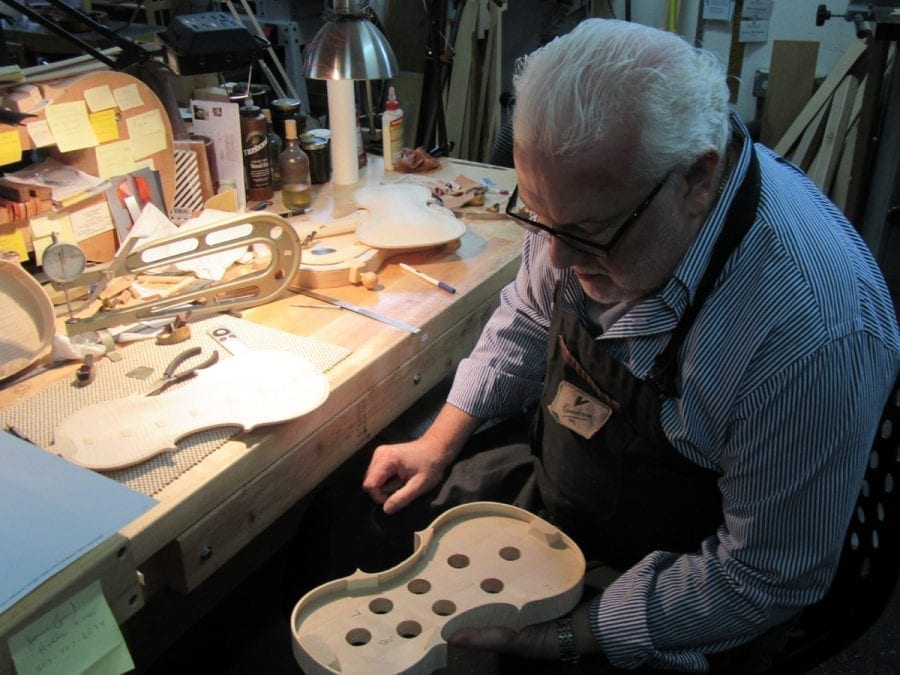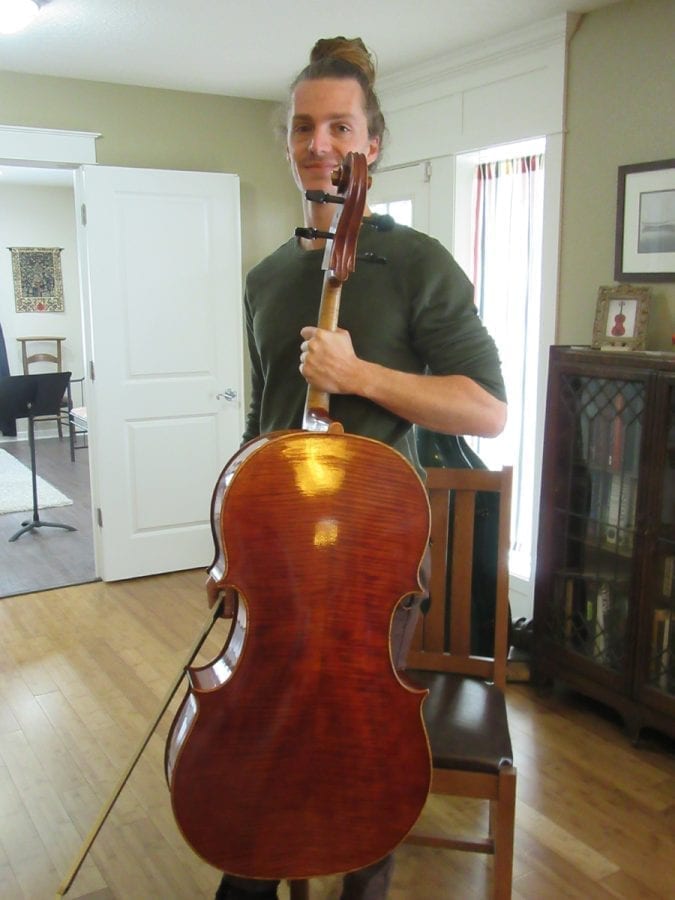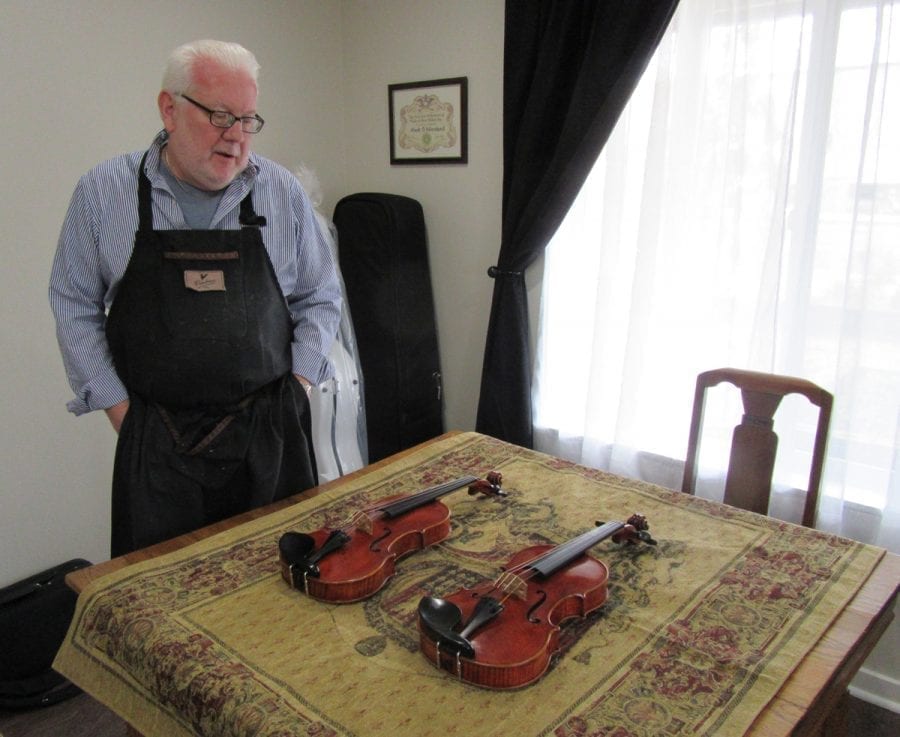Carolyn Schultz-Rathbun
For ClarkCountyToday.com
BATTLE GROUND — By the time Mark Moreland was 15, he was playing in four orchestras and dreaming of a career as a professional violinist. Then his father took Moreland and his younger sister on a trip to Europe to look for better instruments for them. The trip caused Moreland to miss half his 10th grade year — and changed the whole course of his life.
“I had an English teacher,” Moreland says, “a writing teacher, in the 11th grade. And I wrote a paper in the first-person, as a violin maker. I was finishing a violin, working in the middle of the night. And I got to string it up, and play it, and hang it up on a wall.”
It wasn’t just an idle dream.

After high school, Moreland attended college briefly, spent a summer in Vienna playing in an orchestra under conductors in training at the Vienna Conservatory of Music, then secured an apprenticeship in Portland. He was 19.
“I left Vienna,” says Moreland, “took the tux off, and put on jeans. It was a very dramatic change. Within two weeks I was apprenticed in Portland with Paul Schuback. I spent three years (apprenticing) with him.”
Moreland went on to spend over 20 years at Schuback Violin Shop as both general manager and shop foreman, then worked in violin shops in the Washington, D.C. area and Albuquerque, NM, before returning to the Northwest.
He and his wife Sharon spent several years looking for a building in the Portland metro area and along the I-5 corridor before settling on Grace Avenue in Battle Ground in the fall of 2010. He says it’s been a great location.
“We’re on the I-5 corridor,” says Moreland. “We’re close to the airport for shipping. And Battle Ground is a trades town. It’s one reason we’ve been embraced here.”

The Morelands co-own and operate the shop, Sharon handling the business end, and Mark, the craft end.
“We celebrated our 14th wedding anniversary on the 29th of March,” says Moreland. “And we’ve both worked for the same firm ever since we’ve been married. And we work very, very, very well together.”
But it’s not your typical 9-5 job.
“We take Sunday off as a personal day,” says Moreland. “But it’s pretty much almost 24/7 the rest of the time because we have business dealings all over the world. The phone rings up to two and three in the morning. We probably put in seven to ten hours a day.”
Moreland says his favorite part of making an instrument is putting in the purfling, the narrow inlaid decoration around the top plate and often the back plate of a string instrument.
“It’s still a challenge,” says Moreland. “It’s inlaid wood, it’s hand cut, and it tells a tale to all knowledgeable people about how good a craftsman you are. Whether you have a good steady hand and eye, or not.”
His least favorite part? Carving the scroll, the top of the neck of the instrument.
“I really struggle with carving scrolls,” he says. “I’m in the runaway train mode toward purfling. But I hit the brick wall when I get to carving the scroll. I lay out the scroll, I cut it out, I get it roughed, and then I lose interest. I’m more focused on building the box. Carving the scroll just douses me with cold water for the whole project.”

Violins, he says, take 65-67 hours to build, and another 20-25 to varnish and set up. It takes him six to eight weeks to build a cello. Materials run $3,500 to $5,000 per instrument, and the shop owns machinery worth $40 thousand. Moreland makes and sells instruments ranging in price from a workshop line — $3,000 for a violin and $9,500 for a cello — to his better instruments which run $20,000 for a violin and $45,000 for a cello.
“People say, ‘You charge this much for an adjustment that took an hour?’” Moreland says. “And I say, ‘It didn’t take me an hour. It took me 41 years.’”
But Moreland loves what he does.
“There’s a desire and fascination with wanting to create things with your hands,” he says. “And instruments have a stunning level of historical significance. They have lasting value. They’re timeless. We live in a disposable society. But all my tools will be used for the next 300 years. My wood will be sought after for the next 100 years. We’re made with a need to create, to express, to make something beautiful that can be shared with a lot of people.”
To learn more, visit www.markmoreland.com




